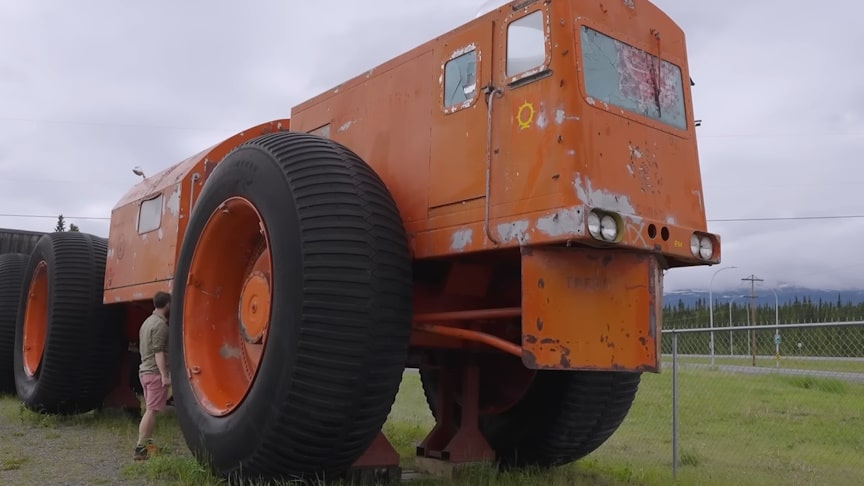The “Sno-Train” was the US Army’s answer to long-range transport in the Arctic: it had living quarters for crew, huge load capacity and dozens of wheels all powered by an innovative electric-drive system. But what is the story of the Snow Train and how did it get to end up in The Yukon Transportation Museum? I travelled there to find out.
source.image: Calum
In the 1950s, LeTourneau Inc. developed several overland trains, essentially oversized semi-trailer trucks that could travel over almost any terrain. Impressed with the results of the Sno-Buggy, in late 1954 the Army Transportation Corps asked LeTourneau to combine the features of the Tournatrain and Sno-Buggy into a new vehicle.
LeTourneau called the result the YS-1 Army Sno-Train but the Army knew it as the Logistics Cargo Carrier, or LCC-1. The LCC-1 combined the wheels of the Sno-Buggy with the power system of the Tournatrain to produce a 16×16 vehicle with one locomotive and three cars capable of handling a load of 45 tons in total.
Advertisement
The control cab was itself articulated into two compartments; a heated driving compartment in front for the crew of three, and a rear section containing the 600-hp diesel engine, generators and fuel tanks. The cab also sported a powered crane on the rear. The LCC-1 eventually ended up abandoned in a salvage yard right behind Fort Wainwright, Fairbanks, Alaska. Despite the years of neglect, the LCC-1 still has its 10 foot tall wheels as well as its generators. In addition to the LCC-1’s primary drive unit, there are also ten of its original trailers in the Fort Wainwright yard, which is not far from the site where the VC-22 sits abandoned.











